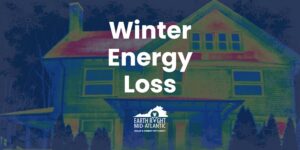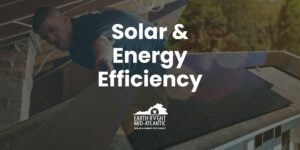Sealing the Leaks: Weatherproofing Your Home
Leaks and Weatherproofing
Leaks are never good news. A leaky cup will spill everywhere, a leaky boat will sink, and a leaky home will increase your power bill.
Your home is full of leaks that you probably don’t notice until the cold winter months roll around. In the winter, these leaks let the cold air outside sneak into your home. This means your HVAC has to work even harder to keep your home warm, skyrocketing your utility bill.
The problem is that most homeowners don’t know where to start when looking for leaks in their homes. There are some obvious culprits: doors, windows, attics. However, those aren’t the only spots in your home where you may be experiencing leaks.
Are Little Leaks Really That Important?
According to the Department of Energy, there are inefficient areas all over your house that can allow cold air to enter your home. While they might seem unimportant, the Environmental Protection Agency states that all the leaks in an average home combined result in an amount of energy waste equivalent to leaving a window open every day of the year. They estimate that addressing these inefficiencies by air sealing and insulating the home can save homeowners 15% on heating and cooling costs.
Clearly, these little leaks are important. To take advantage of every bit of heat your HVAC produces, you need to address inefficient areas in your home.
Finding Leaks in Your Home
To take care of these issues, you need to know where to look. The Department of Energy provides a list of quick fixes that can decrease air leaks in your home. This includes sealing or caulking doors and windows, caulking any gaps where wiring or plumbing comes through the walls/ceiling, and installing foam gaskets behind outlets and wall switches. Most of the inefficiencies can be spotted through a visual scan of your home.
When looking for leaks in your home, check for gaps in your walls, ceiling, or floors. You might see gaps around your baseboards, open holes around wiring or plumbing, or gaps around windows or doors. These little openings can let outside air into your home and let inside air escape. The Department of Energy says that if you can see light around a door or window frame, then it is leaking. These gaps will need to be sealed with caulk, foam seal, or weatherstripping.
You will also want to check any existing caulking, foam seals, or weatherstripping in your home. If these were not properly installed or have deteriorated, they may not actually be preventing leakage.
Professional Help
While performing a visual inspection can help you to identify many leaks in your home, there are likely even more hidden leaks that are still unnoticed. Qualified energy technicians can perform an energy assessment to identify all of the problem areas in your home. This may include a blower door test, a diagnostic tool where a large fan depressurizes your home, allowing energy technicians to find your home’s air leaks.
Earth Right Mid-Atlantic has a team of trained energy efficiency specialists who can help you identify leaks in your home. Additionally, they can take note of any areas of your home in need of upgraded insulation. If you think your home is in need of some energy efficiency upgrades, then reach out to Earth Right. We would be happy to design an energy efficiency package that fits all your home’s needs.
Insulating and sealing your home is an excellent way to save on your energy bills and increase the comfort of your home. You should notice that, after reducing energy waste and leaks, your home is using less energy and is better able to regulate its temperature.







